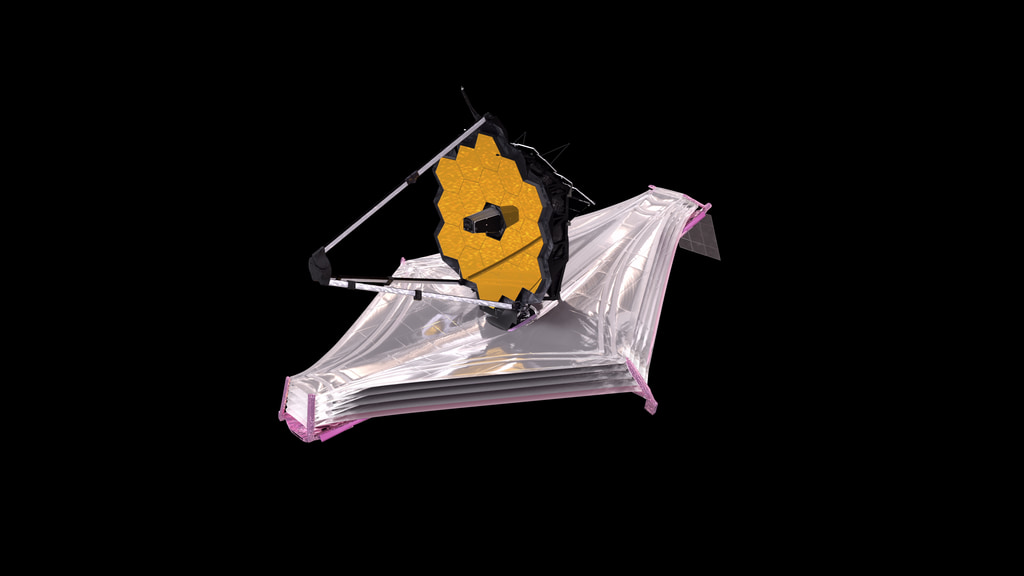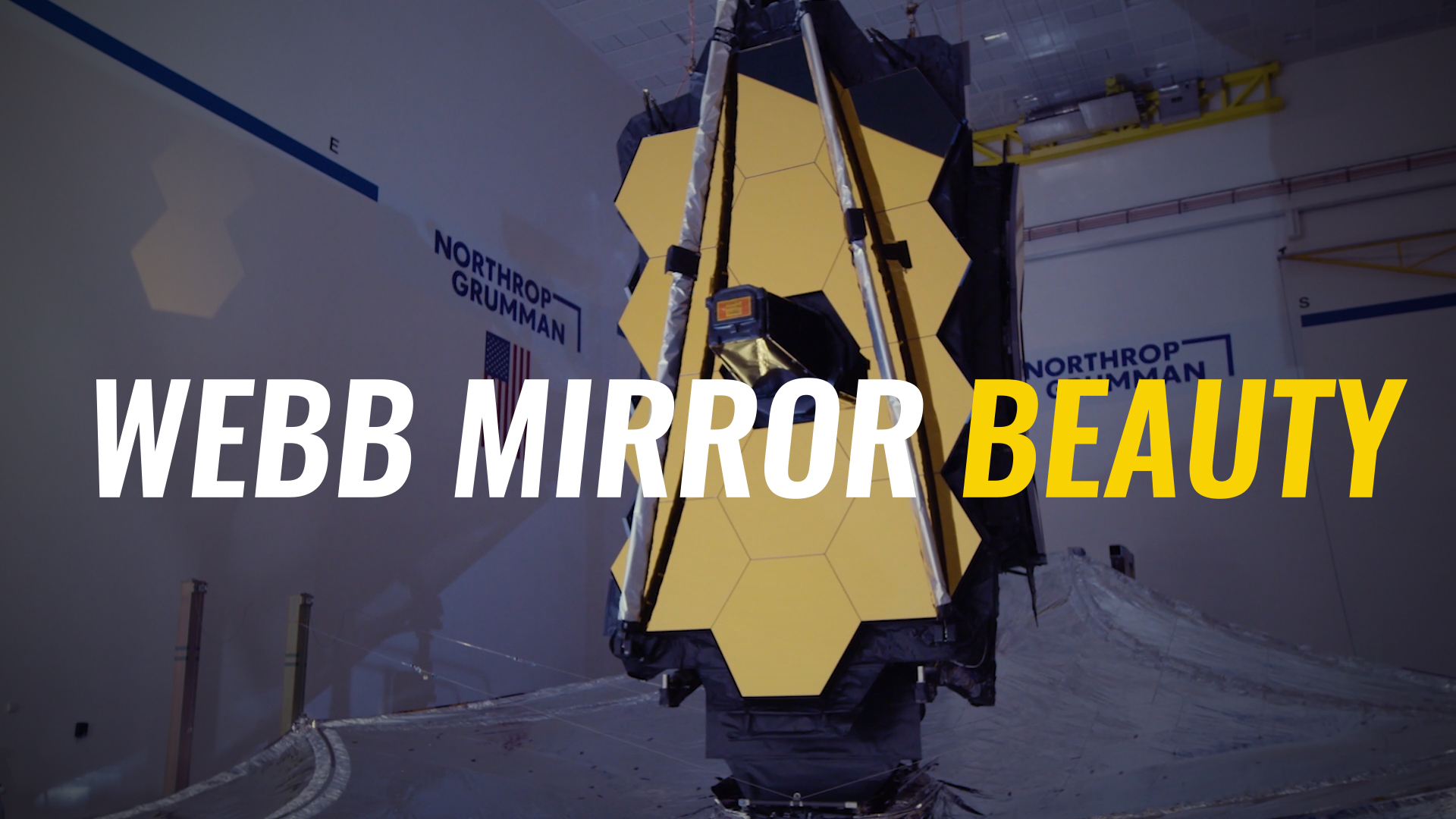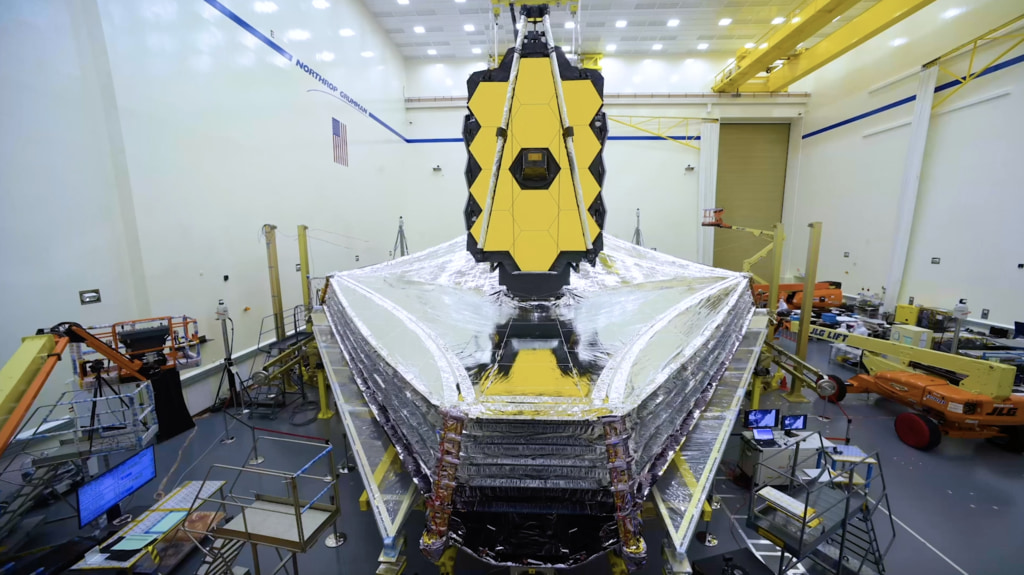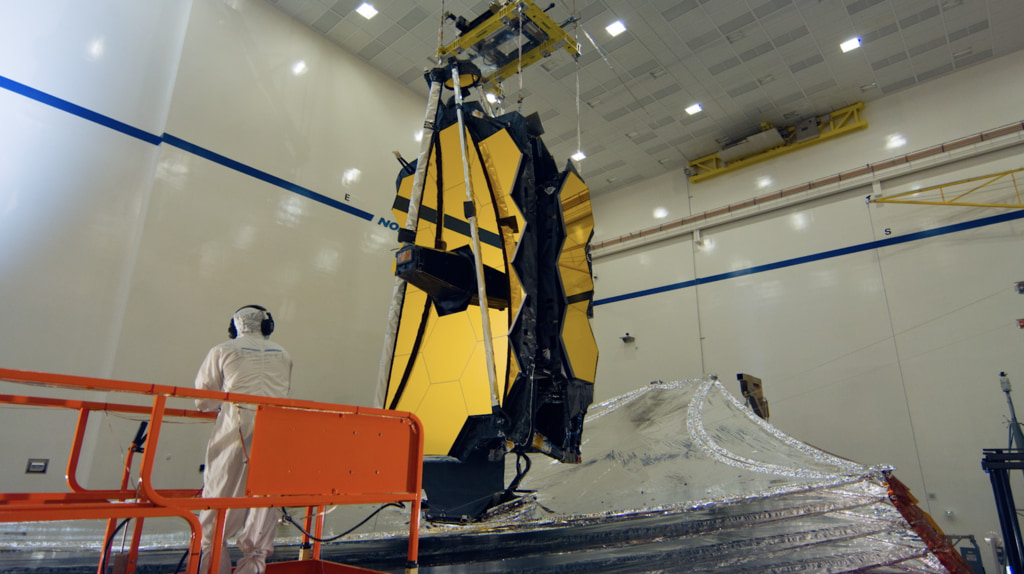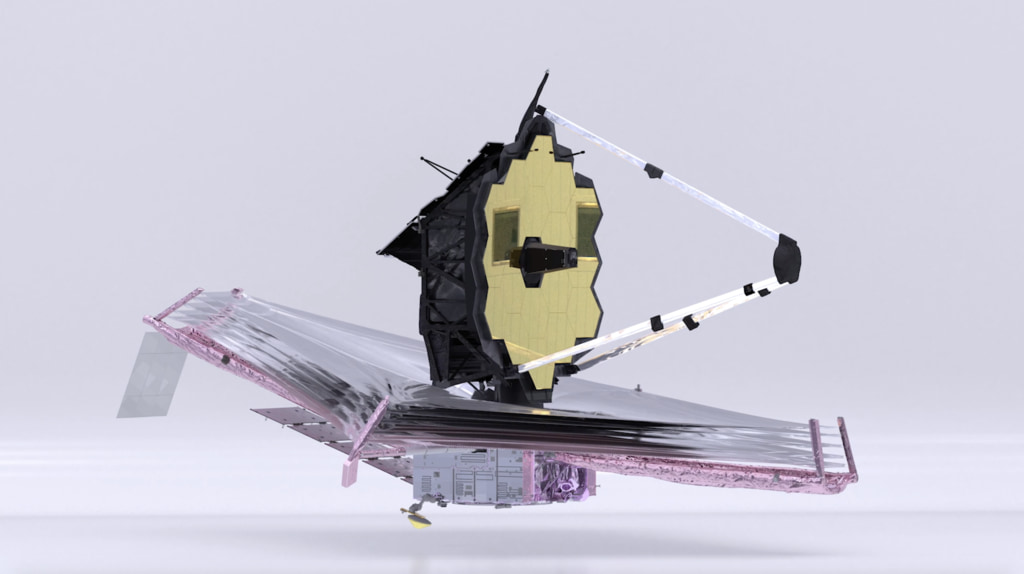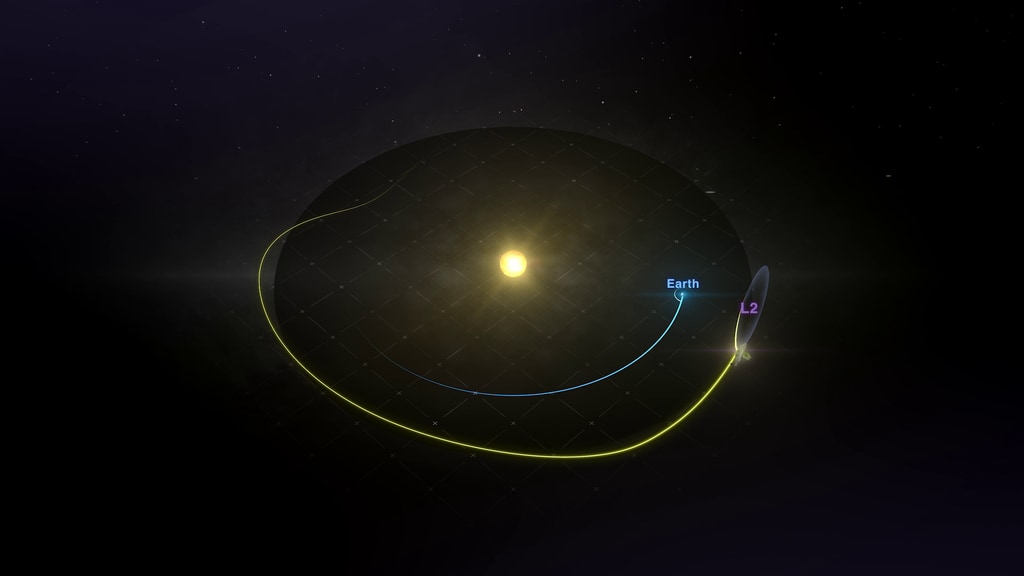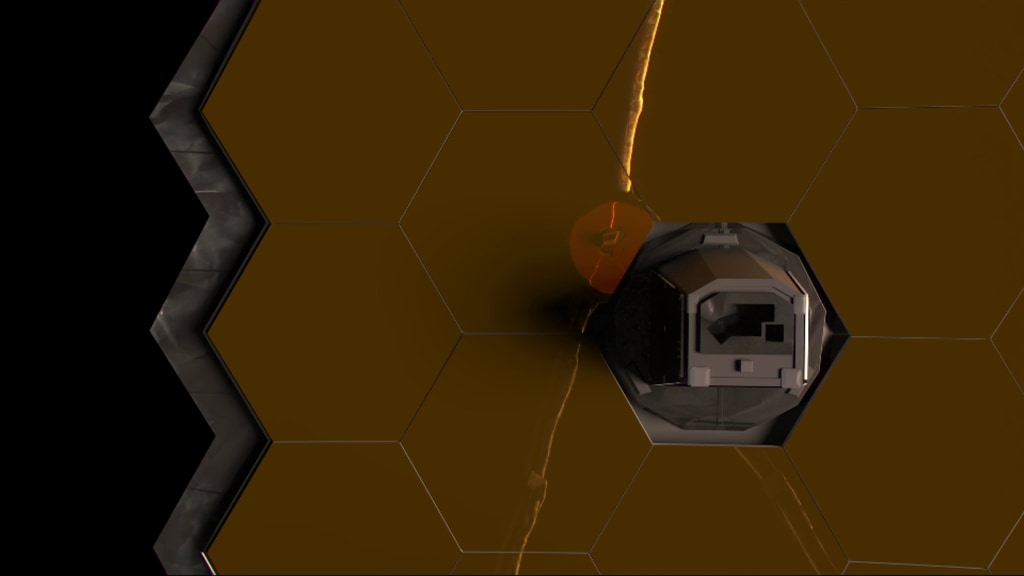World’s Biggest and Most Powerful Space Telescope Launches Dec 25 Live Shots

Cut b-roll for the live shots are below. Scroll to the bottom of this page
Quick link to canned interview with Dr. Jonathan Gardner / Deputy Senior Project Scientist, James Webb Space Telescope.
There are plenty of animations, b-roll and other material already available for use on this GALLERY PAGE
Click here to stay up to speed on Webb updates
The biggest and most powerful space telescope ever built is set to launch on Friday, Dec. 25th. The JAMES WEBB SPACE TELESCOPE will be our revolutionary new window to the stars that will rewrite what we know about the universe. From its location 1 million miles away from Earth, and with a giant sunshield the size of a tennis court to block the light of the Sun, Webb is primed to peer back in time to the very early days of our universe. Equipped with the most state-of-the-art technology ever launched into space, Webb will dazzle us with the most detailed images of the cosmos ever captured.
Webb will act as a window into the past, revealing the first stars and galaxies that formed after the Big Bang some 13.5 billion years ago. It's a period of time we know precious little about in our universe's history - the light from it is so very faint that it can't be reached by the telescopes we currently have in space. How did those very first stars assemble into galaxies, and how did those galaxies evolve over time? Scientists can’t wait to unravel these mysteries, and answer some of the fundamental questions about how our universe formed. And when Webb isn’t unlocking the secrets of our early universe, it will search for potential signs of habitability that may be present on worlds beyond our own.
Live and taped interviews will be offered on the following days:
Wednesday, Dec. 22: 10:00am - 1:00pm EST
Thursday, Dec. 23: 6:00am - 1:00pm and 4:00pm-7:00pm EST
Please do not request an IFB unless it is absolutely required.
Click here to request an interview: https://forms.gle/7keX8XVbJa7CmdHA6
Suggested Anchor Intro:
Prepare to see the universe like never before! On December 24th/ Tomorrow NASA and its partners will launch the biggest and most powerful space telescope ever built: the James Webb Space Telescope. Like a time machine, the telescope is so powerful it will see the very first stars and galaxies that formed after the big bang. And it’ll help scientists probe the atmospheres of planets around other stars in search of the ingredients needed for life. Here to tell us about this exciting mission is NASA expert XX.
Suggested Questions:
Tomorrow is a very exciting day! NASA is launching the biggest and most powerful space telescope. Can you tell us a little bit about this mission?
Webb is so powerful it can act more or less like a time machine, can you tell us what we might expect to see, and why it’s important?
This telescope is going to be joining the Hubble Space Telescope in space, how are the two telescopes going to work together?
How will Webb help advance our search for life?
I've heard Webb described as a transformer. Can you talk about what makes this mission such an engineering feat?
How can we keep up to date on this mission?
Questions for Longer Interviews:
What are you most excited about observing/learning once Webb is operational?
Webb is the largest and most ambitious space telescope humans have ever put into space. Can you talk about some of the challenges of getting the telescope to its destination?
Once Webb is off the ground, there are a series of important steps for the telescope before it gets to its intended location. Can you talk about how tricky the next few months will be?
Will Webb take a deeper look at some of the star systems like TRAPPIST-1 where scientists have detected Earth-size planets orbiting in the habitable zone of a star?
Looking for the building blocks of life is a top priority for Webb. Can you tell us what you’ll be looking for when it analyzes the atmospheres of some of the intriguing moons of Jupiter and Saturn?
Cannd interview with Dr. Jonathan Gardner / Depity Senior Project Scientist, James Webb Space Telescope. TRT 5:15. Complete transcript is available under the download button.
Associated b-roll for the live shots
Associated b-roll for the live shots
Associated b-roll for the live shots
Associated b-roll for the live shots
Associated b-roll for the live shots
Associated b-roll for the live shots
Associated b-roll for the live shots
For More Information
See the following sources:
Credits
Please give credit for this item to:
NASA's Goddard Space Flight Center
-
Producers
- Michelle Handleman (KBR Wyle Services, LLC)
- Christina Brooke Mitchell (KBR Wyle Services, LLC)
- Jessica Sansarran (NASA)
- Maria-Jose Vinas Garcia (Telophase)
- Pedro Cota (ADNET Systems, Inc.)
Release date
This page was originally published on Monday, December 13, 2021.
This page was last updated on Wednesday, May 3, 2023 at 1:43 PM EDT.
